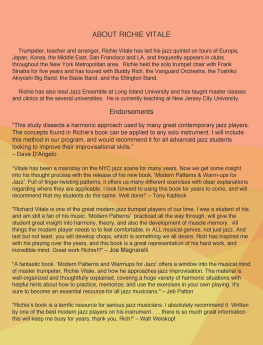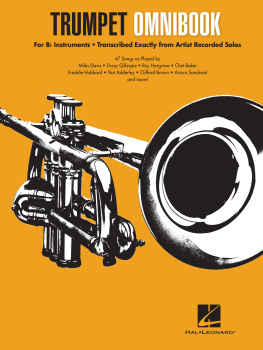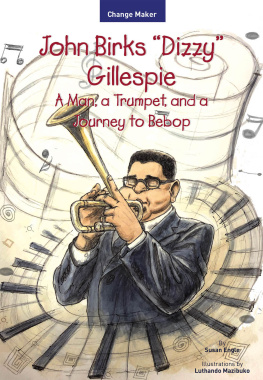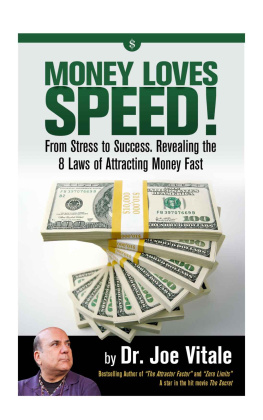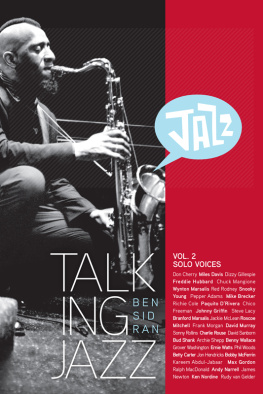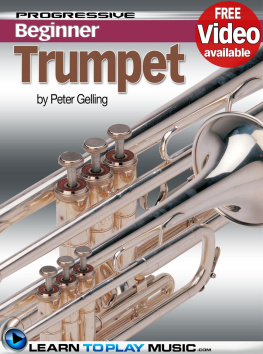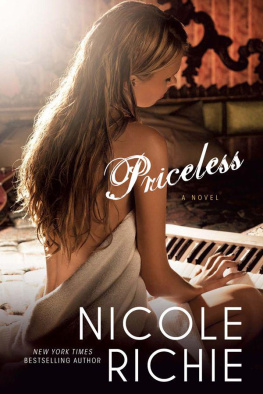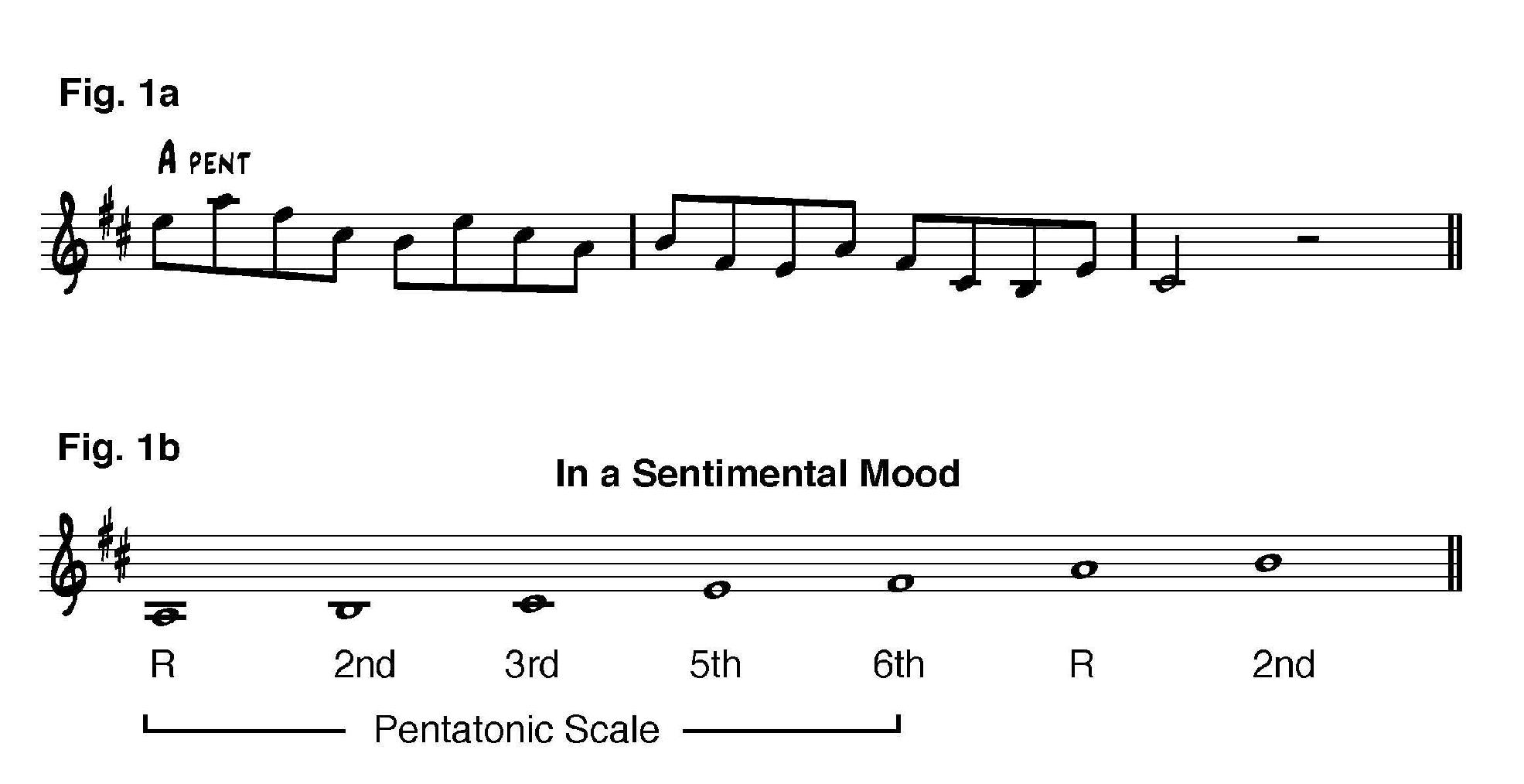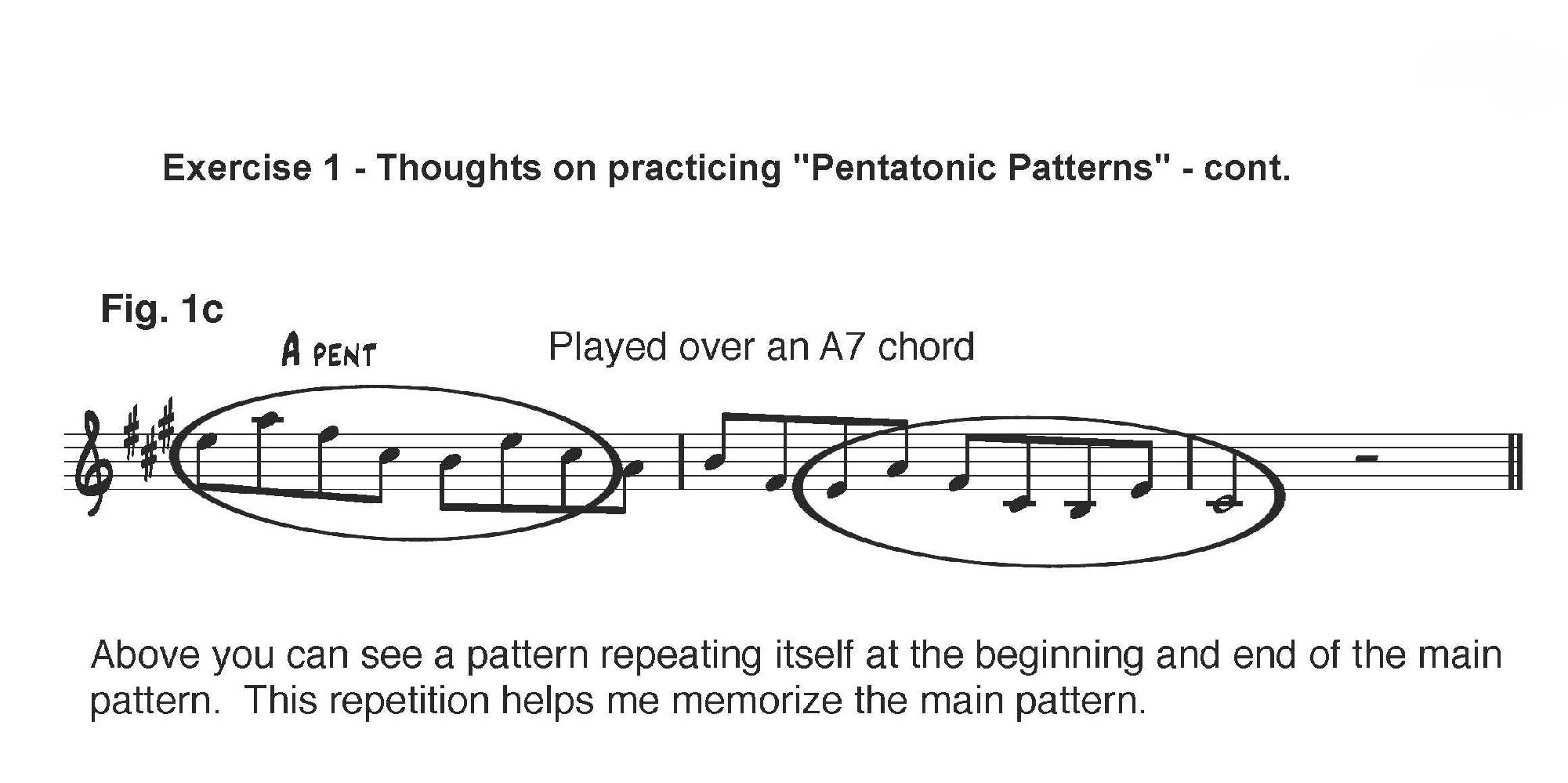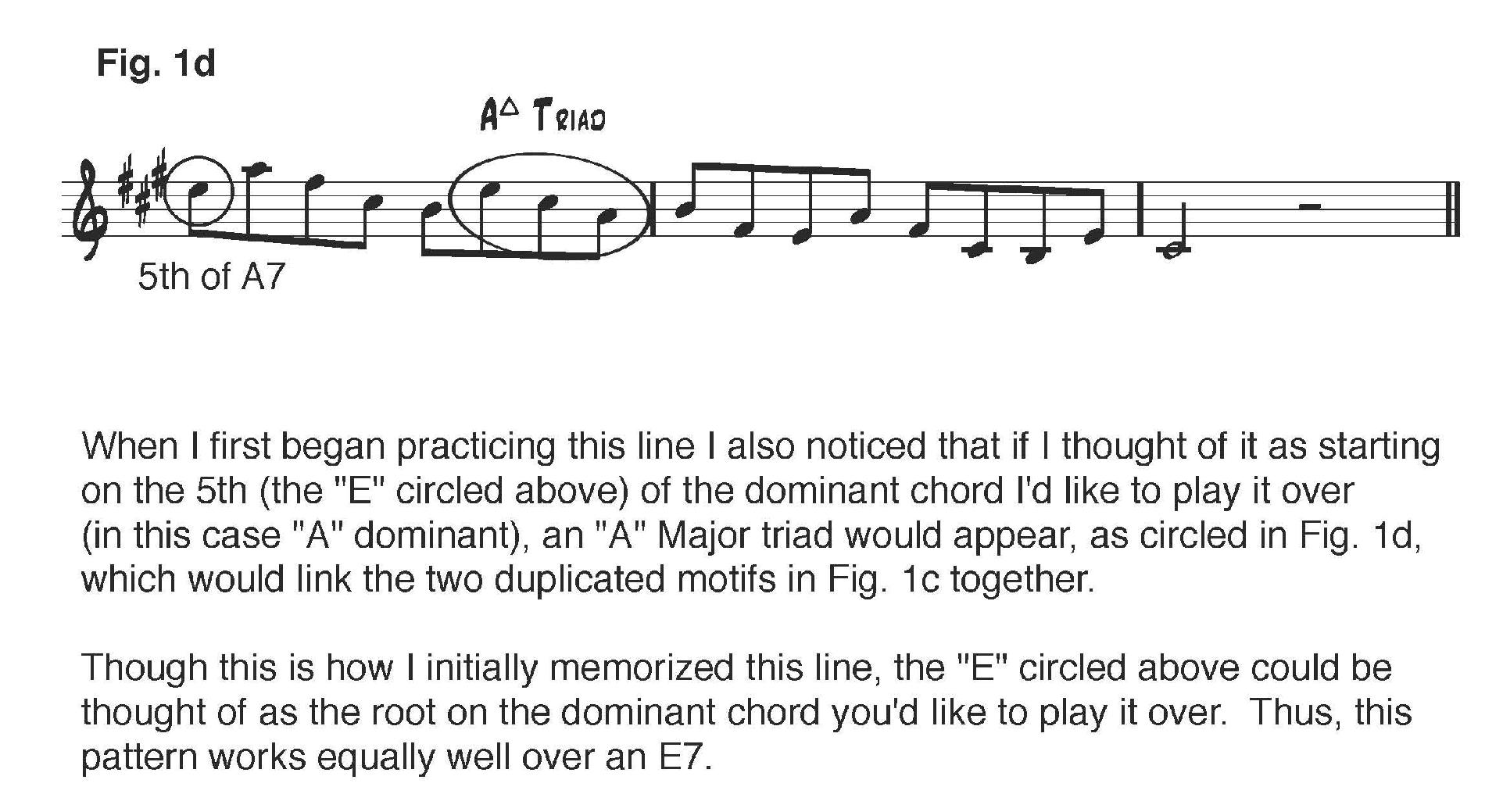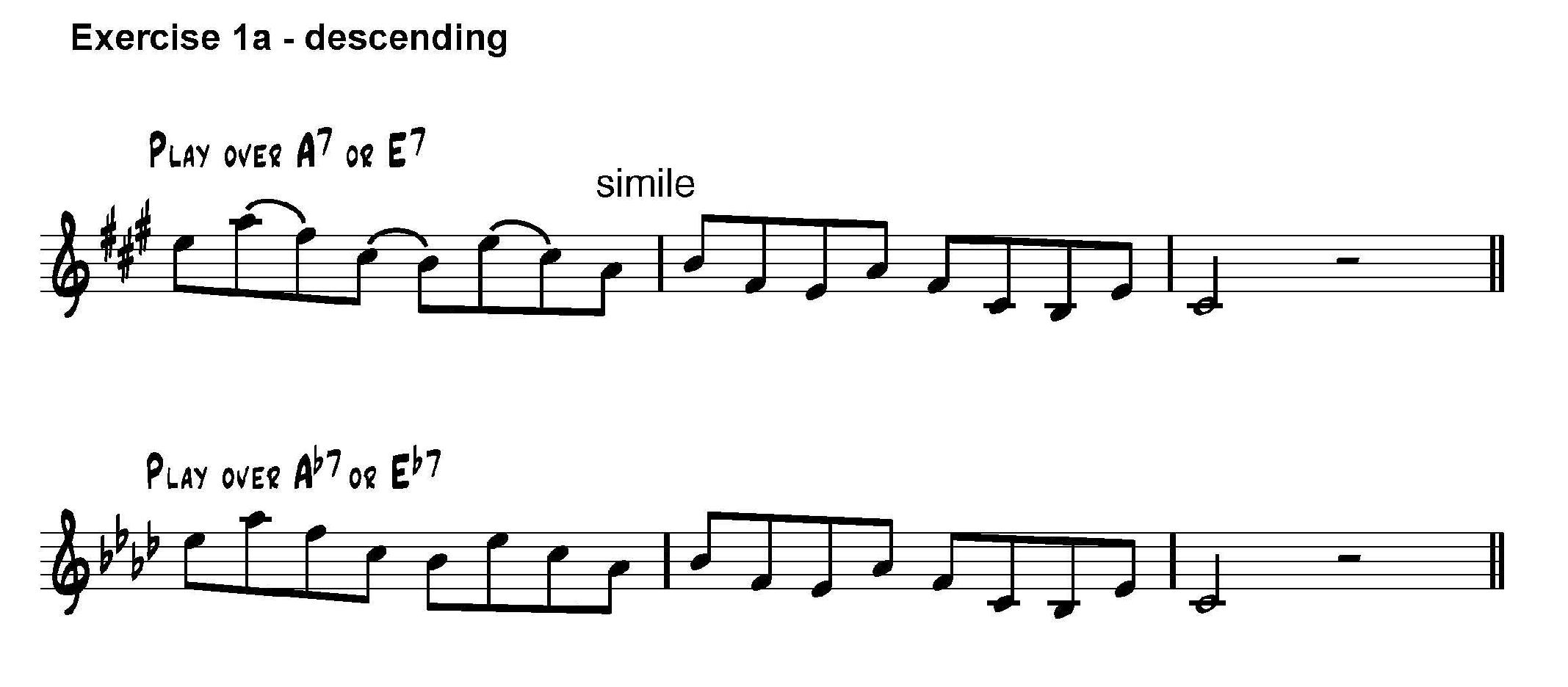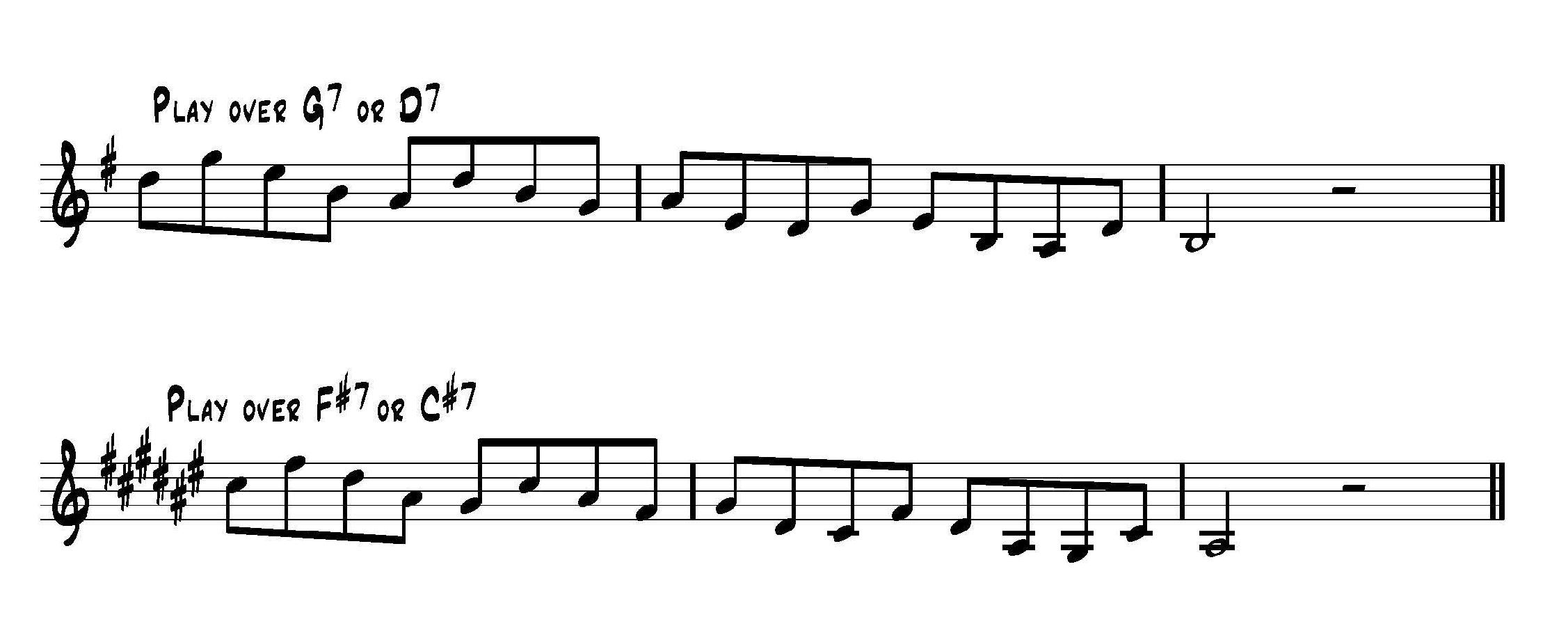Modern Patterns
& Warm-ups
for Jazz
for trumpet
and
all instruments
by
Richie Vitale
Copyright 2016, Richard Vitale Pub. Co.
Website: RichieVitale.com
Distributed by Lulu Publishing.
All Rights Reserved. International Copyright Secured.
No part of this book may be reproduced in any form without permission from the publisher.
Made in the U.S.A.
How to use this book:
Ive written out these exercises in their entirety, as they are for your mind as well as your endurance. They are specially designed to make you a more fluent and flexible player and help you to hear music differently.
Once you are familiar with the exercises that are eighth notes, you can take them at a faster tempo so they equal 16th notes. If your goal is to use them in jazz improvisation, when you feel comfortable with these patterns, you can close the book, relax, and transpose them.
If you feel like extending the range of the exercises, please do so. If they go too high for your range, feel free to start or end each exercise where you feel comfortable on your instrument.
These exercises were designed for execution on the trumpet but are practical on any instrument. On patterns that first descend and then ascend, such as 1 a/b and 2 a/b, on your particular instrument, start mid-range in the practical soloing range of your horn and descend until you reach your lowest note. Then start again where you began and ascend to the top of your practical soloing range.
Certain exercises will start at the lowest range of your horn and ascend only and conversely, some will start at the highest practical soloing range of your horn and descend only. Some, like Exercise 14, have a fermata mark before the end of the exercise. If it's early in your warmup, or that's as high as you can play... you can stop there.
If you are a brass player, stop at the top of your range on ascending exercises, you can rest a moment and start where you left off, and ascend as high as you can (or wish to), to increase your endurance and range.
Ive written the exercises in this book in all twelve keys for several purposes:
They are to be used as warm-up for brass players, picking and choosing which exercises theyd like to do on a particular day or week. This is to make a good warmup session enjoyable and thoughtful, instead of a daily routine.
Some of the exercises, as I began to practice and notate them, I found were so difficult, that it was clearly advantageous to write them out transposed first. This also gives me the opportunity to write out my thoughts on how to approach the pattern.
I also am able to show different articulations for a warmup over several bars.
Some variations of Exercises are so similar to the original I didn't make aseparate "Thoughts on Practicing this Pattern" to those variations.
A couple of the patterns are so obviously usable in soloing, or are obscure patterns,I did not include a "Practical Use" directly after the pattern.
Regarding abbreviations I use in this book:"Pent" stands for "Pentatonic Scale" and is shorthand to save ink and space. "R"stands for the "Root" of a chord; "maj" stands for "Major" "min" or "-" stands for"minor"; "dim" stands for "diminished"; "alt" stands for "altered"; "p" stands for"perfect"; "+" or "aug" stands for "augmented"; and "btwn" stands for between."Ex." stands for Exercise and "Fig." for Figure.
Substitute chords for the original chords will be found in parenthesis, like this:(Gb7(#11))
I sometimes talk about "target notes", and my thinking is unconventional...I want you to understand the correct theory behind these lines, but use every methodto memorize them.
The "target note" is the note I am aiming for, and out of the notes preceding thetarget note, while not superfluous, some can be replaced by another note. The notesbefore a target note often wrap around a target note like a snake, and are sometimesatonal, not being in the diatonic scale that the rest of the phrase is in.
Just as mnemonics are used to memorize words, lists, numbers, and phrases, you canuse similar methods to memorize a musical line and transpose it into several keys. Iuse target notes, intervals, similar fingerings, degrees of a scale, intervals, triads, anyand all means available to help me memorize a phrase. (I encourage you to do thesame.)
This is part of improvising to me, the woodshedding process and developing newways to get around on my instrument. It is something you can do yourself as Iencourage all of my students to develop their own ideas and independence.
Ive found these patterns to be useful and fun to practice and hope you enjoypracticing them as much as I do!
Why I wrote this book:
On the bandstand, we like to live in the moment. But as in salsa dancing, I'verepeated routines, or parts of routines, until muscle memory takes over. Thisrepetition is in the hundreds and thousands for me.
It is the same on your instrument. You must practice scales, arpeggios, andpatterns until they are second nature to you, so you can call upon your pastpractice in a live situation and play what comes to your mind, or somethingclose to it.
I found after years of practicing etudes and exercises I wanted to exercise mymind, as well as to exercise for range and endurance. Over the years, I'vecome up with certain exercises that were fun, practical, and great for warmupin all keys.
I use to attend Barry Harris's Jazz Cultural Workshop many years ago (areally cool name for a weekly jazz workshop).
Barry said three things I will never forget. A student asked him, "Why shouldI practice this (referring to a line that was a little low for his practical soloingrange)... I'll never use it!" And Barry replied, "Because you should be ableto play it."
At another time, as I was attending one of his classes he said, "When youmake a mistake, make it into something." In other words, make it work foryou!
The third thing Barry said that stuck with me is, "We tend to practice what weknow, what is easy for us." So even though this book shows some of the mostrecent patterns I'm practicing, I'm always looking for a new way to exploremy instrument, or music, or life.
This book is meant for all musicians, including classical musicians and thosein all musical genres, who are not in the habit of transposing lines into alltwelve keys but are intrigued by the jazz idiom and/or the beauty of usualpractical patterns and their composition.
Pentatonic Patterns
Ex. 1 - Thoughts on practicing"Pentatonic Patterns"
Ex. 1 - Pentatonic Patterns

